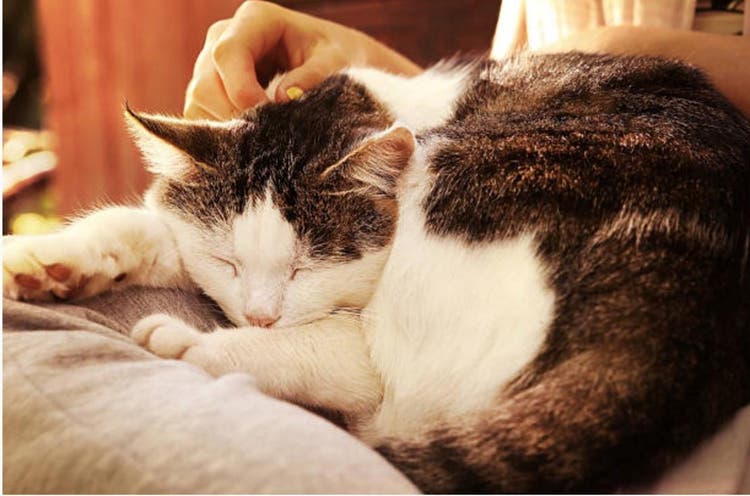Reviewed by Dr Abbie Lam DVM
Here’s what to expect in the first few days and weeks after bringing your new kitten home.
Sharing your home with a new kitten can bring you and your family so much enjoyment, but it also brings a lot of responsibility for their care and comfort. In the days and weeks ahead, you’ll need to introduce your kitten to their new home, begin litter training and start the socialisation process. Here’s how to help them get along with you, your family and your other pets.
The first few hours: Getting comfortable at home
Getting your kitten settled in those first few hours can have its challenges. Here are some ways to help the whole family with the process:
- Once you arrive home, place the carry cage in a safe, enclosed room. Open the cage door and allow your kitten to come out on their own terms.
- It’s important to make your kitten’s new home comfortable and low stress. Prepare an accessible, cosy bed, and do your best to keep noise to a minimum
- For the time being, keep other pets in a separate area, and encourage kids to talk and play quietly. Read our guide on introducing cats to children to help your cat fit in to your family
- Play with your kitten to introduce them to their new toys. This will help them feel welcome in their new home
- Gradually introduce your kitten to new rooms and let them explore your house
- If you have an enclosed and cat-safe outdoor area, teach your cat how to use the cat flap
- Teach your cat to use the litter tray
- Introduce your cat to their scratching posts
The first night: Reducing nighttime anxieties
The first night in a new home can be a bit scary and overwhelming for a kitten. When it’s time to go to bed, set up your kitten in a small room or enclosed area of the house with their bed and litter tray. Make sure water, food and bedding is placed away from the litter tray.
The carry cage can be a comforting place over the next few days if your kitten is frightened or sleepy. Put it near their bed so the kitten can go in and feel secure at any time.
The next few days: Easing into a routine
Here are a few additional ways you can help your kitten feel at ease:
- Set up a cardboard box on its side with warm blankets to provide shelter and comfort
- Use the same litter your kitten is used to, but have a spare tray ready with different litter so they have a choice
- Establish a feeding schedule for your kitten
- Cat pheromones can help some kittens feel calm and adjust to new surroundings more quickly. Ask your vet for more advice
Remember, it’s been a big occasion for both of you, so cries for attention are normal, even for the first few nights.
The next few weeks: Socialising and training
Over the coming weeks, you’ll want to start training and socialising your kitten. Here are some tips to get started.
1. Discourage scratching
Kittens are curious and inquisitive and will look for any opportunity to play, scratch, climb and jump. During play they may discover how to use their claws. Set up a scratching post and run the kitten’s front paws along the surface – reward them when they use it. With patience, training and understanding, your kitten will learn where they can and cannot scratch.
For more tips: Check out our guide to preventing your cat from scratching your furniture, drapes and other indoor items.
2. Begin litter training
It’s important to litter train your kitten as soon as possible. Place the tray in a quiet spot, put your kitten in its tray after they’ve woken or eaten, and praise the kitten when they use the tray.
And remember, punishing hinders progress, so never yell at or hit your kitten, or rub their nose in their mess. Punishments like these can make your kitten fearful of you.
Good to know: Struggling to litter train your cat? Get step-by-step details and troubleshooting advice.
3. Socialise your kitten
Both the kids and adults in your family will be understandably excited about your new arrival. Help your kitten fit into a human environment with these tips:
- Always supervise your kitten around small children. Sit them down on the floor (kittens can wriggle free and fall from a height) and let them stroke the kitten gently in their lap. See our guide to introducing cats to children.
- Show children the correct way to pick up the kitten. Teach kids to cradle the kitten’s back end in one hand and place the other on the kitten’s chest. Never pick up a kitten by the scruff of its neck.
- Encourage good hygiene. Cover your children’s sandpit so the kitten doesn’t use it as a litter tray. Teach children to wash their hands after playing with the kitten, especially before eating.
- Create safe barriers. If you have a baby, install a barrier such as a baby gate at the entrance to the nursery to keep the kitten and infant apart.
- Go slow with animal introductions. Meeting other pets can be stressful. Introduce your kitten to other pets slowly, and never force them together.
Learning your cat’s emotional signals
Cats experience emotion and will attempt to communicate their feelings. You and your new pet will get along much better if you learn to understand what it’s trying to express.
Cats use the following postures and behaviours to display emotions:
- Relaxed: tail down, ears upright, whiskers to the side, pupils slightly dilated
- Friendly: tail up
- Alert: pupils dilated, whiskers tensed
- Aggressive or threatened: tail held close to body, ears erect and turned back, pupils constricted
- Frightened: arched back, raised tail, hairs on end, ears flat, whiskers stiff, pupils dilated
- Purring: usually a sign of contentment, but may also be a sign that they are scared or hurt
A playful kitten will bring plenty of fun, affection and entertainment into your home. With thoughtful preparation and attentive care, they will quickly become a happy member of your family.



